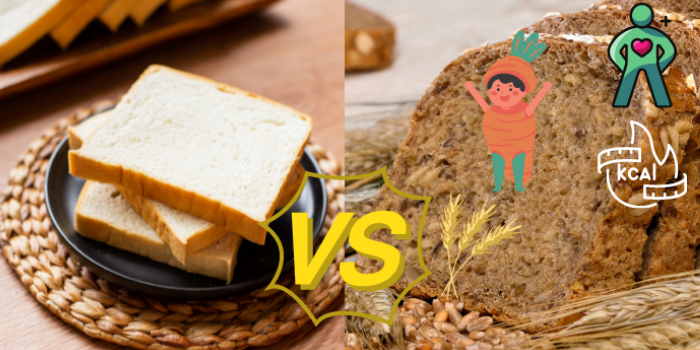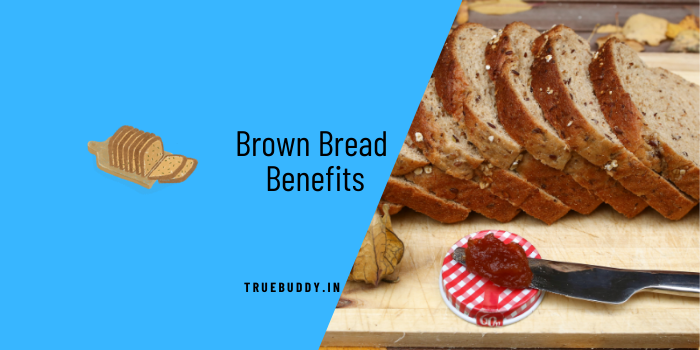Bread is a staple part of our daily meals. Whether it is a morning or evening, they are always favorites. They are an easy-to-go snack in the form of simple toast or can be made into a whole meal loaded with vegetables and sauces. Traditionally, there was only white bread. Though they do not have much nutritional value and are rich in carbohydrates, it is almost everyone’s binge on food. But, nowadays, people have become more health-conscious and shifting towards brown bread. Many dieticians and nutritionists are advocating brown bread benefits over white bread. Others are sharing the brown bread breakfast recipes, promoting healthy life. But, often we are confused and doubt ‘is eating brown bread daily a healthy choice?’.
Being nutritious and easy to digest, bread is an important part of our diet. We do not feel hungry immediately after consuming it.
You may also like:
- Why Protein Intake is Important in Your Daily Diet?
- Harmful Effects of Fast Food- Reasons to Avoid it
With the passage of time, different varieties of bread are available in the market. Nowadays, those who want to lose weight, are mostly using brown bread instead of white bread. Not only for losing weight, but there are also many other health benefits to prefer brown bread over white bread.
Though both are bread, there is a difference in texture, taste, nutrition value, and benefits. One of the basic differences is the raw material of the two varieties of bread. White bread is made from fine and processed raw material. Brown bread is made from unprocessed wheat.
Brown Bread Benefits vs White Bread

Here, are some reasons to include brown bread in daily meals.
1. Ingredients
The main difference between brown bread and white bread is the ingredients. The white bread is made from processed wheat flour. The wheat is processed to remove the kernel and make it free wheat from bran and germs. Once the kernel is removed, wheat is turned into refined wheat flour. Though the kernel is stripped off by processing, the wheat endosperm remains intact.
Contrary to this, brown bread ingredients are unprocessed whole wheat/rye grains flour. It is sometimes added with molasses or coffee. The unprocessed flour has wheat bran, wheat germ, and endosperm, which contains the nutritions. This is also the reason for this bread to be often called whole-wheat bread; as the word, ‘whole’ means all. The brown color is due to bran and germs. At times the color is added with coffee and molasses.
2. Texture
Since white bread is formed from stripped-off wheat flour, it is soft and light in texture compared to brown bread that is loaded with fiber which makes it a bit coarse.
3. Taste
The whole wheat bread or a brown bread taste is often described as complex and nutty. The bran and germ give a denser taste compared to the white bread. The fine flour gives a better taste to white bread.
4. Calories
A white bread loaf is considered to have seventy-seven calories, while brown bread calories are just seventy-five. It has a lower glycemic index.
5. Nutrition
The brown bread nutrition value is higher than the white bread. White bread is low in essential nutrients. It is rich in carbohydrates, fat, and sodium. It has only eighteen percent of protein and ten percent of fiber. On, the other hand, brown bread contains a good amount of protein and fiber. The brown bread protein for 100 gm quantity is 13 gm. In addition to this, brown bread is rich in B vitamins thiamine, riboflavin, niacin, pantothenic acid, and vitamins B-6 and B-12. It is a good source of folate.
The white bread does not have any benefits except for providing tasteful sumptuous food. However, brown bread is rich in fiber, vitamins, and minerals of a wheat kernel. The nutritious content of brown bread over white bread renders many health benefits. It helps in weight management and aids in better metabolism. It controls blood sugar levels and cholesterol. For all these reasons, brown bread is often recommended by dieticians to those who follow the keto diet.
6. Brown Bread is Good for Health
Since, the brown broad is rich in fiber, vitamins, and minerals, it is considered good for health. The fiber content of the unprocessed wheat flour promotes healthy digestion and bowel movement. The fiber also paves the way for healthy gut bacteria to thrive. It fortifies the immune system. The amount of folate in brown bread helps in the prevention of birth-related defects. The other ingredients of the bread prevent cardiovascular and heart diseases. It lowers the risk of stroke and types 2 diabetes.
Brown Bread Disadvantages
Brown bread has calories and can present an obstacle in losing or maintaining weight. According to the studies, a single slice of whole-wheat bread has 130 calories, 2.5 grams of fat, and nearly 25 grams of carbohydrates. The whole-wheat bread may also be higher in added sugar than products made with refined white flour.
The Bottom Line
Slices of bread are quick and easy to go but do not have much nutritional value and taste. It is the added mayonnaise, sauces, vegetables that make it sumptuous. However, compared to white bread, whole wheat bread does have a nutritional value of wheat. The wheat bran and germ are rich in vitamins and minerals that are passed on to the whole wheat bread. However, some are of the opinion that added sugar takes away the health benefits of whole wheat.
Also, in many countries, whole wheat bread is complementarily termed brown bread. But not all brown bread is whole wheat bread. Some manufacturers add brown color, coffee, or molasses to change the color of the white bread to brown and term them as brown bread. Since these bread does not have a wheat kernel, they do not possess the claimed nutritional value of brown bread as they are just disguised.
So, before purchasing the brown bread check the packet and its ingredients. Be sure, it is whole wheat bread.
